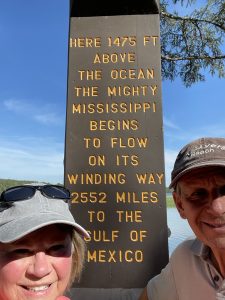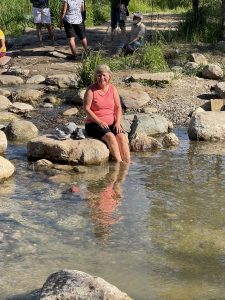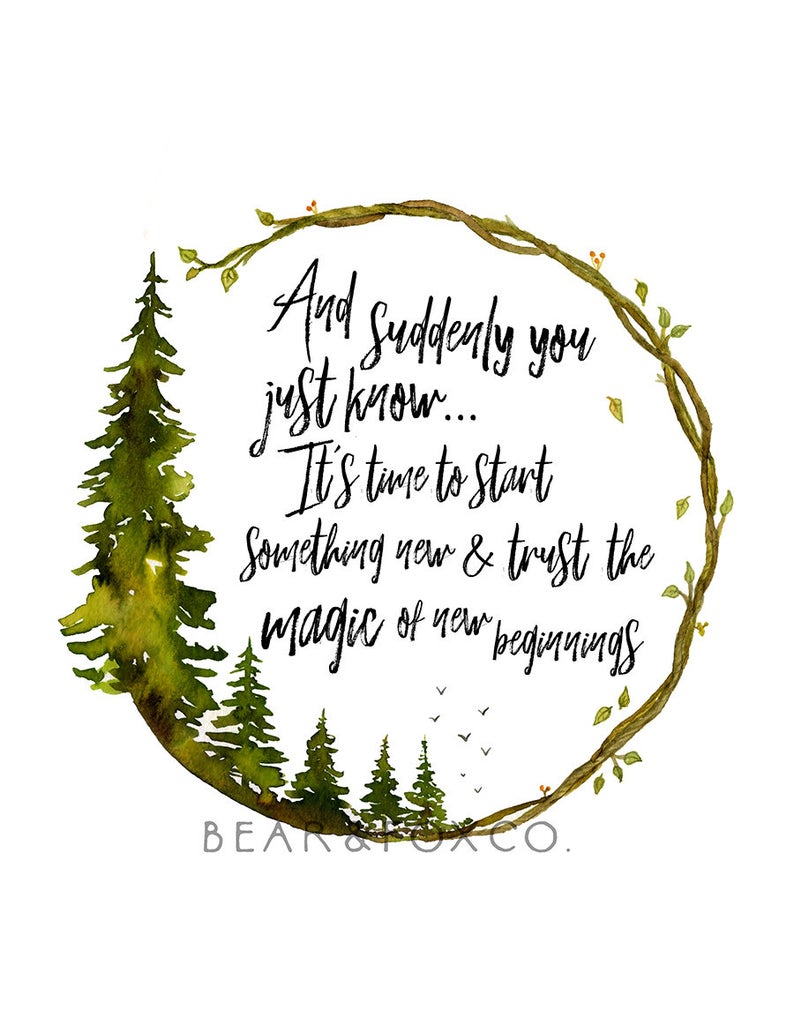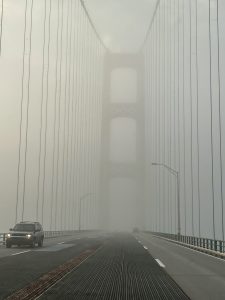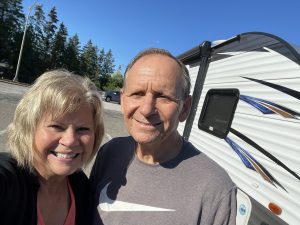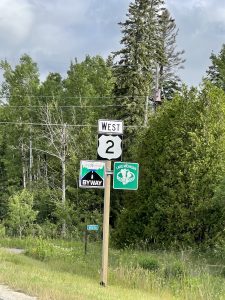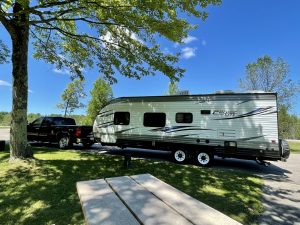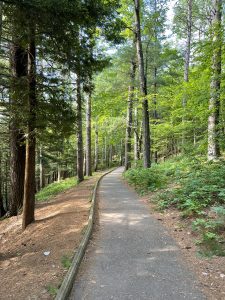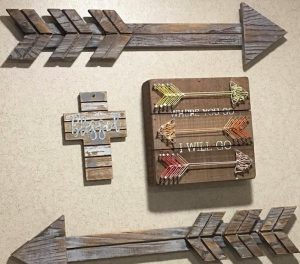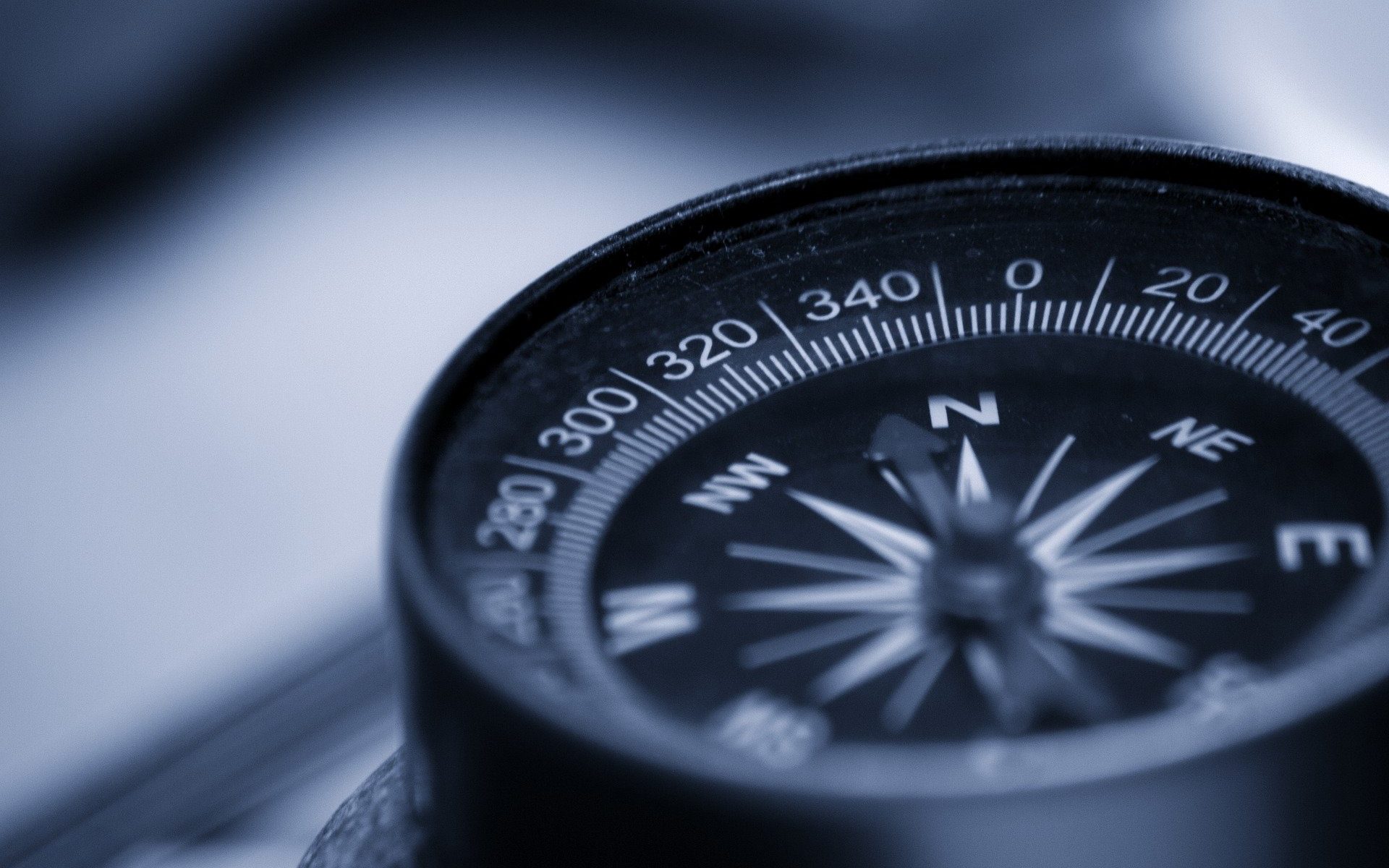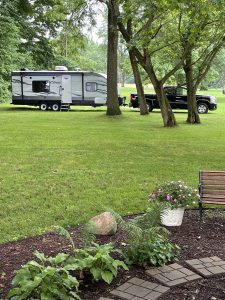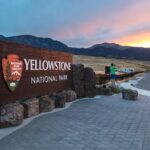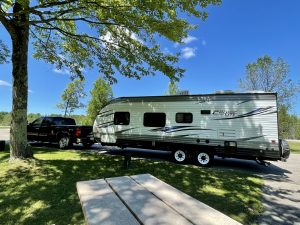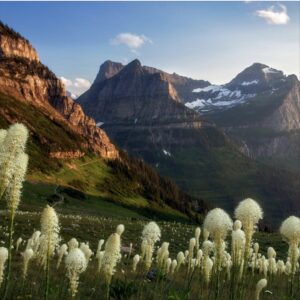We packed plenty of warm clothes for this trip to the northwest: jeans, sweaters, flannel shirts, fleece lined hoodies. We’d read of warm mornings at the campsite but cool temps in the mountains. Within the week before the trip, we began to observe different weather reports in the areas we planned to visit: a heat wave was taking place in Oregon, Washington, and Montana! My weather app showed 101° in Havre, Montana, a location where we planned on perching at a Walmart parking lot for the night. Knowing we wouldn’t have overnight electricity for even so much as our little fan, Ron said, “Kathi, find us a campsite in Havre.” The Lord quickly supplied. I made a call and encountered a friendly voice on the other end, just as I had so many times previously, in planning the trip. I’ve discovered a multitude of friendly people across this vast northwest we will be traveling! And I’ve discovered overnight availability when I least expected it.
Due to the expected heat wave we would be driving into, I realized that we just might have to turn on that atrocious AC in that little travel trailer of ours. I refer to it as atrocious because although occasionally necessary, as it very well might be on this journey, I don’t like it. I don’t like the door and windows closed, blocking the fresh air and open view. I don’t like the loud noise of the unit right above our heads, in the middle of our cute little home away from home. But, should high temps prevail at night, although atrocious, it might be a relief. Thus the earplugs.
 After learning of the heat wave, hoping to block the sound of AC, I purchased pink earplugs, perfect for a woman’s ear, so they say.
After learning of the heat wave, hoping to block the sound of AC, I purchased pink earplugs, perfect for a woman’s ear, so they say.
We’re into the fifth day of our trip now, and the nights have cooled just enough that we didn’t need the atrocious AC, but the earplugs did come in handy. Let me explain why.
Late Friday, we pulled into a small country campground, just past Duluth on Highway 2. It was clean and tidy and offered full hook ups and internet! This is great, we thought. We had just gotten set up when we heard the rumble. We first assumed there was a busy highway behind us which we hadn’t noticed, but the loonngg whistle soon gave it away. Yes, a train track was just a short distance behind the campground. Ron, hopeful, said, “I don’t think the trains will run at night.”
Ha!
In the morning, nearby campers spoke of trains running through every twenty minutes or so. Whistles blew often, they said. All. Through. The. Night. Ron, exhausted from work and driving many hours, had slept through it all. I did, too. But only because of my pink earplugs!
If you attended Sunday School when you were a kid, you might remember singing a song with the lyric, “Be careful little eyes what you see. . .”
The second stanza is similar:
“Oh, be careful little ears what you hear;
Be careful little ears what you hear;
for the Father up above
is looking down in love,
so be careful little ears what you hear.
It might be a children’s song, but it’s based on teaching from the Bible, so it’s a message for all ages: We must be careful what we hear.
Sometimes we need to wear our pink earplugs.
The Father is “looking down” – not to judge us but to help us. He knows the danger to us if or when we listen to what we should not. He tells us it is a danger that affects our faith.
He’s given us His Word to teach us in order to protect us and in order to bless us. That’s His desire for us. Abundant life. And in that Word, He instructs us of certain things we should not continue to hear. We’re familiar with many of these things: gossip, negativity; however, in my recent studies, I’ve noticed a continual and strong message given throughout the whole Bible – a warning about some things to which, when we listen, we can gradually and easily become desensitized to the dangers. (The enemy, Satan, just loves it when we become desensitized to those things God desires.)
The Lord tells us not to listen to mediums, sorcerers, and fortune tellers, but He doesn’t stop there. He warns us not to listen to what some people teach – some who claim to be prophets – some who claim to be wise – some who claim to have the answers. He tells us that these people speak ideas of vanity (the importance of self), they speak ideas from their own minds, not from the mouth of the Lord. He says that some of these people claim to teach in the His Name, but He makes it clear – their teaching is not from Him. The Lord did not send them.
Sound familiar today? I see it constantly on social media. It is more than subliminal in movies and television shows. Constant little tidbits of teaching that initially might sound spiritually okay but isn’t. It’s hurting us, and God knows it. He says we must plug our ears to it.
He warns us that our family or close friends might be listening to these tidbits of false teaching. But He says we must not listen to it – even if they encourage it. Wow! This is serious business. The train is rumbling.
Jesus tells us to consider carefully what we hear. Tells us it measures our faith. The Apostle Paul teaches that many people who appear to be Christians actually teach false doctrines and endless controversies instead of doing God’s work. He says they’ve wandered away from the truth to meaningless talk. He instructs the Church to deal with them and to command them to change. It’s important to the Church. It’s important to the Lord. The train whistle is blowing.
It’s God to whom we must listen, and we hear Him in His Word. The closer we listen, the more understanding we will be given. In fact, we’ll just keep receiving more understanding, the Word says. It stands to reason that when we’re listening to falsehoods, the more falsehoods will fill our minds, but when we’re listening to the Word, the more truth will fill us.
We are not under law. God does not force us to listen to Him. But we believers recognize His voice. It is the voice of the Shepherd. And we want to hear Him above other voices.
The rumbling is all around us. The warning signals are given. The train whistle is blowing. I need to use my pink earplugs to block it out. 
~~~~~
If you haven’t followed Jesus as Savior yet, click here to learn more about becoming a believer.
Further reading:
Deuteronomy 13:8
Jeremiah 23:16; 27:9, 14
Mark 4:24
Luke 8:18
1 Timothy 1:4
2 Timothy 4:3
Click here to read the next post, #4 Trust the Magic
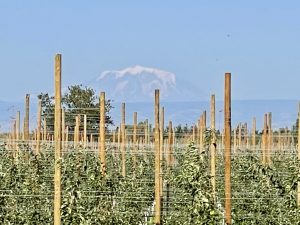 First, Rainier was the backdrop of acres of fruit. How appropriate, for as we traveled, we munched on deep red sweet cherries from the area. Never so fresh!
First, Rainier was the backdrop of acres of fruit. How appropriate, for as we traveled, we munched on deep red sweet cherries from the area. Never so fresh!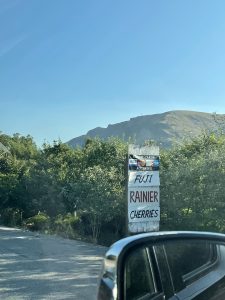
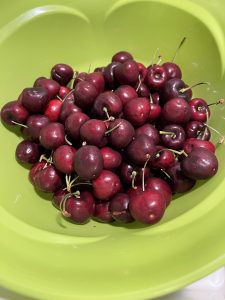
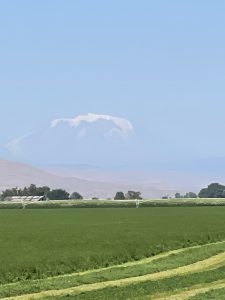
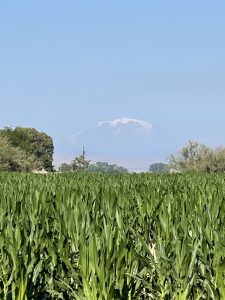 Soon we discovered corn fields, which we hadn’t seen this far west since Minnesota.
Soon we discovered corn fields, which we hadn’t seen this far west since Minnesota.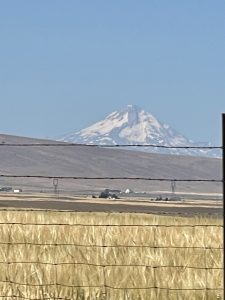
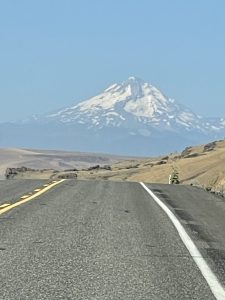 Eventually, most of the green farmland gave way to hot, dry field and rolling hills, colorless other than a few small trees that can root in the rock.
Eventually, most of the green farmland gave way to hot, dry field and rolling hills, colorless other than a few small trees that can root in the rock.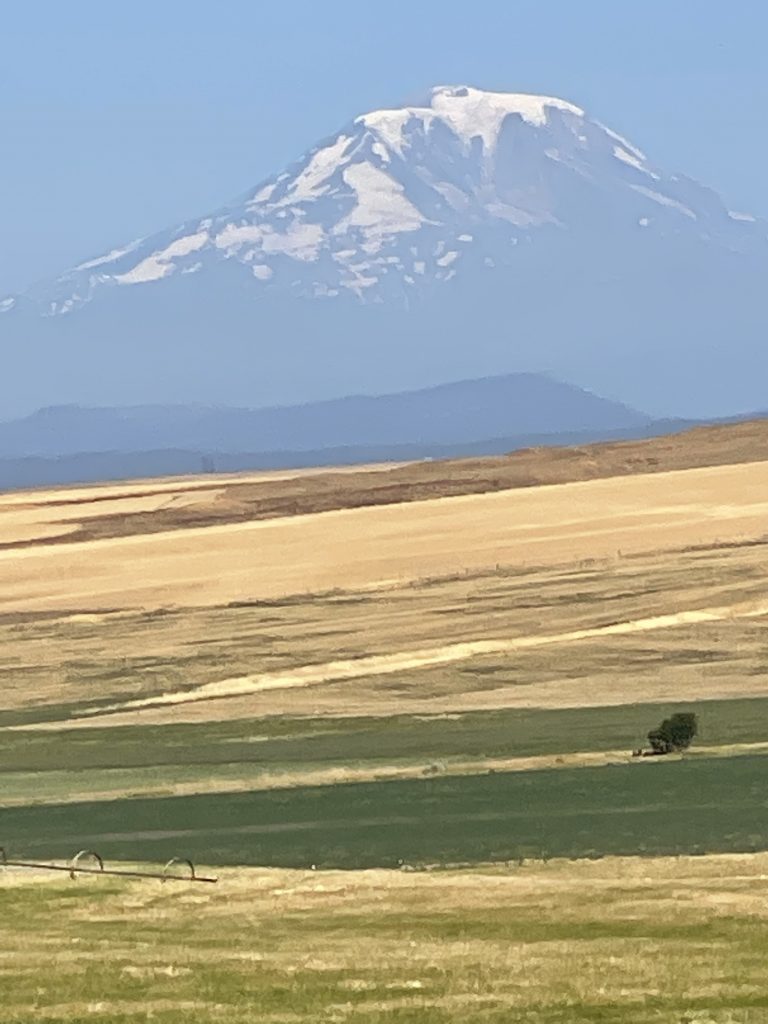
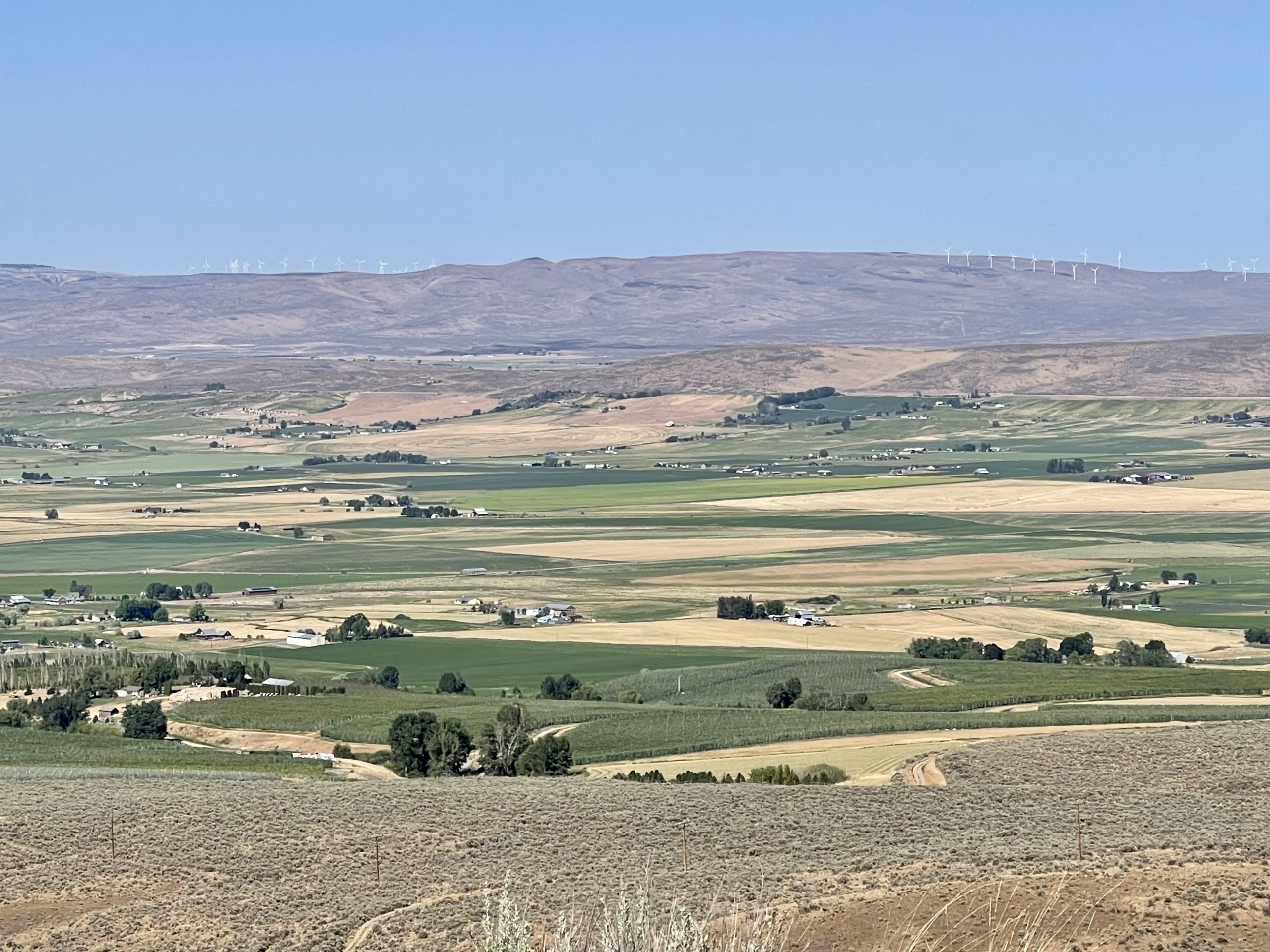 We stopped high upon a butte to look out over the valley below. Unlike the Wenatchee Valley, this valley was hot and dry and brown, yet it was beautiful. Green fields evidenced ingenuity of the farmers in the area. It was not my favorite kind of landscape or climate, yet I loved it for God’s people were in the land and worked the land. This land had resources and purpose, just as all His creation does.
We stopped high upon a butte to look out over the valley below. Unlike the Wenatchee Valley, this valley was hot and dry and brown, yet it was beautiful. Green fields evidenced ingenuity of the farmers in the area. It was not my favorite kind of landscape or climate, yet I loved it for God’s people were in the land and worked the land. This land had resources and purpose, just as all His creation does.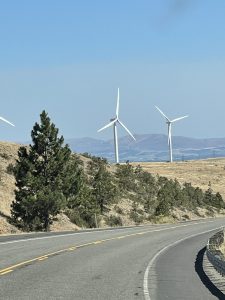
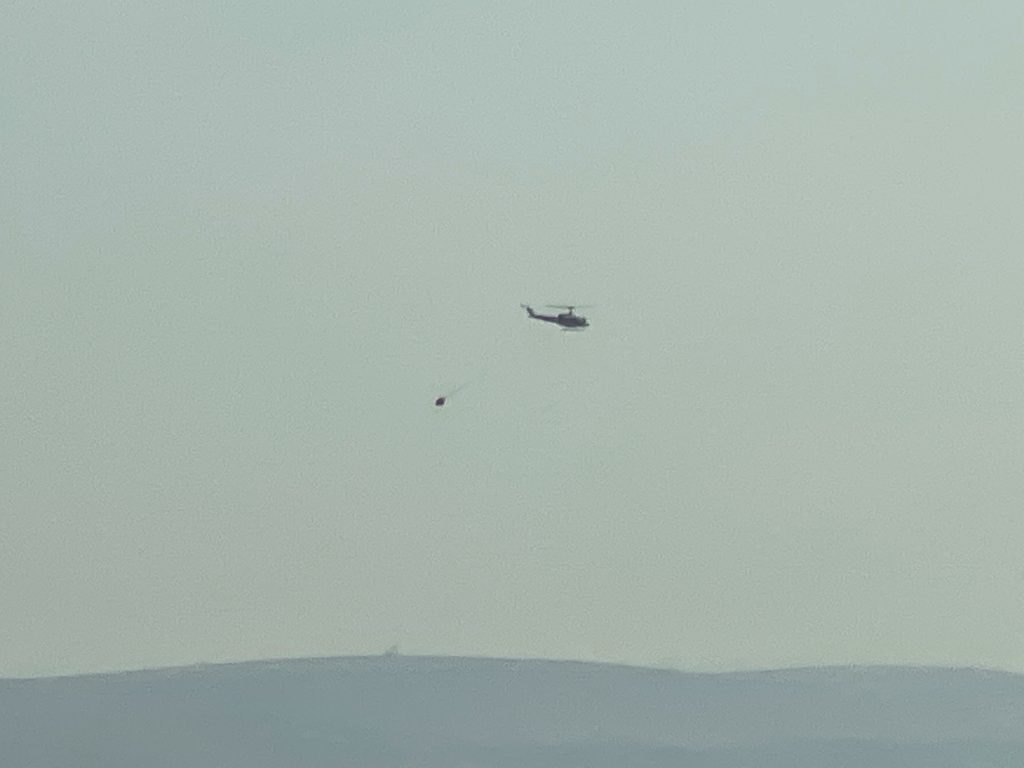
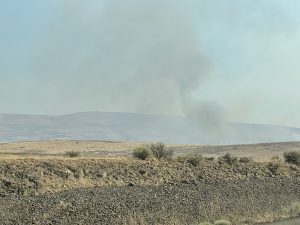
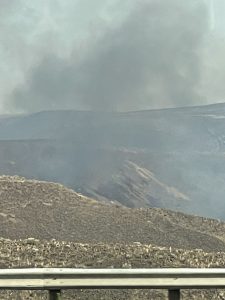
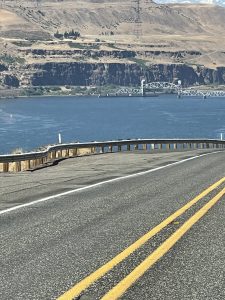 Finally the blue water and green steeps around the Columbia River Gorge came into view.
Finally the blue water and green steeps around the Columbia River Gorge came into view. 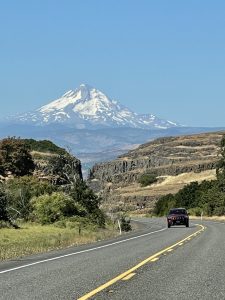 It was a welcomed sight.
It was a welcomed sight. 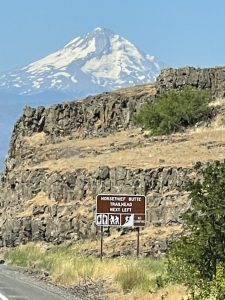
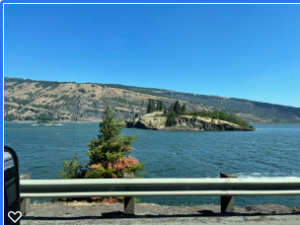 We said goodbye to Washington and hello to Oregon. It seemed a different land – green and cool. But it was still windy – very windy!
We said goodbye to Washington and hello to Oregon. It seemed a different land – green and cool. But it was still windy – very windy! 
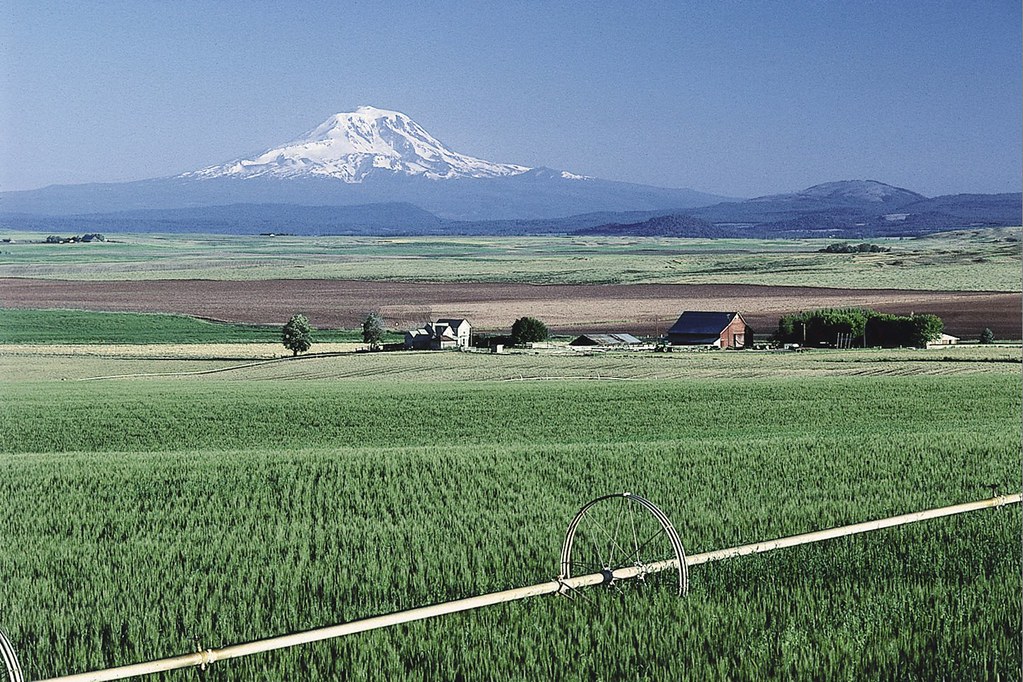
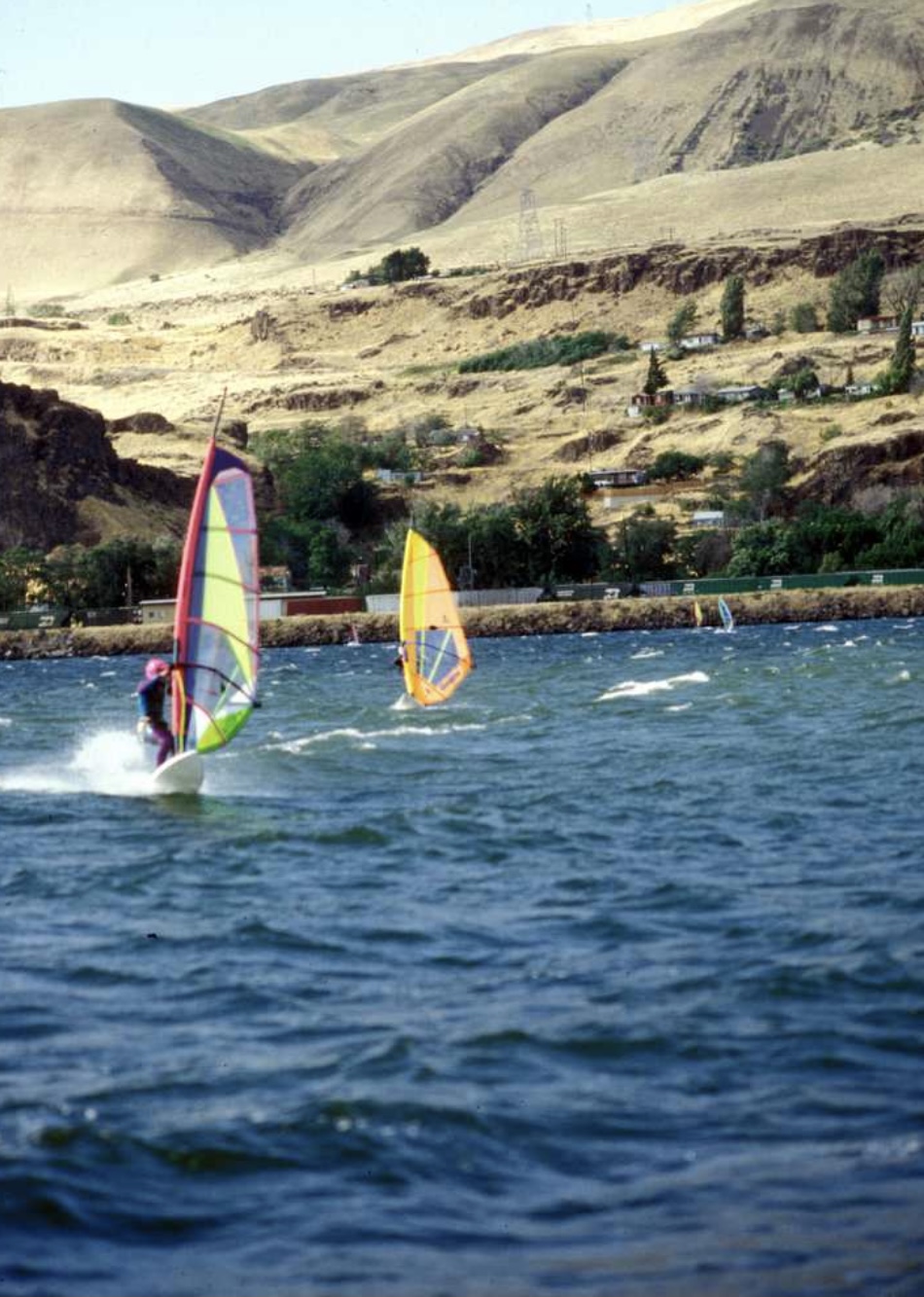
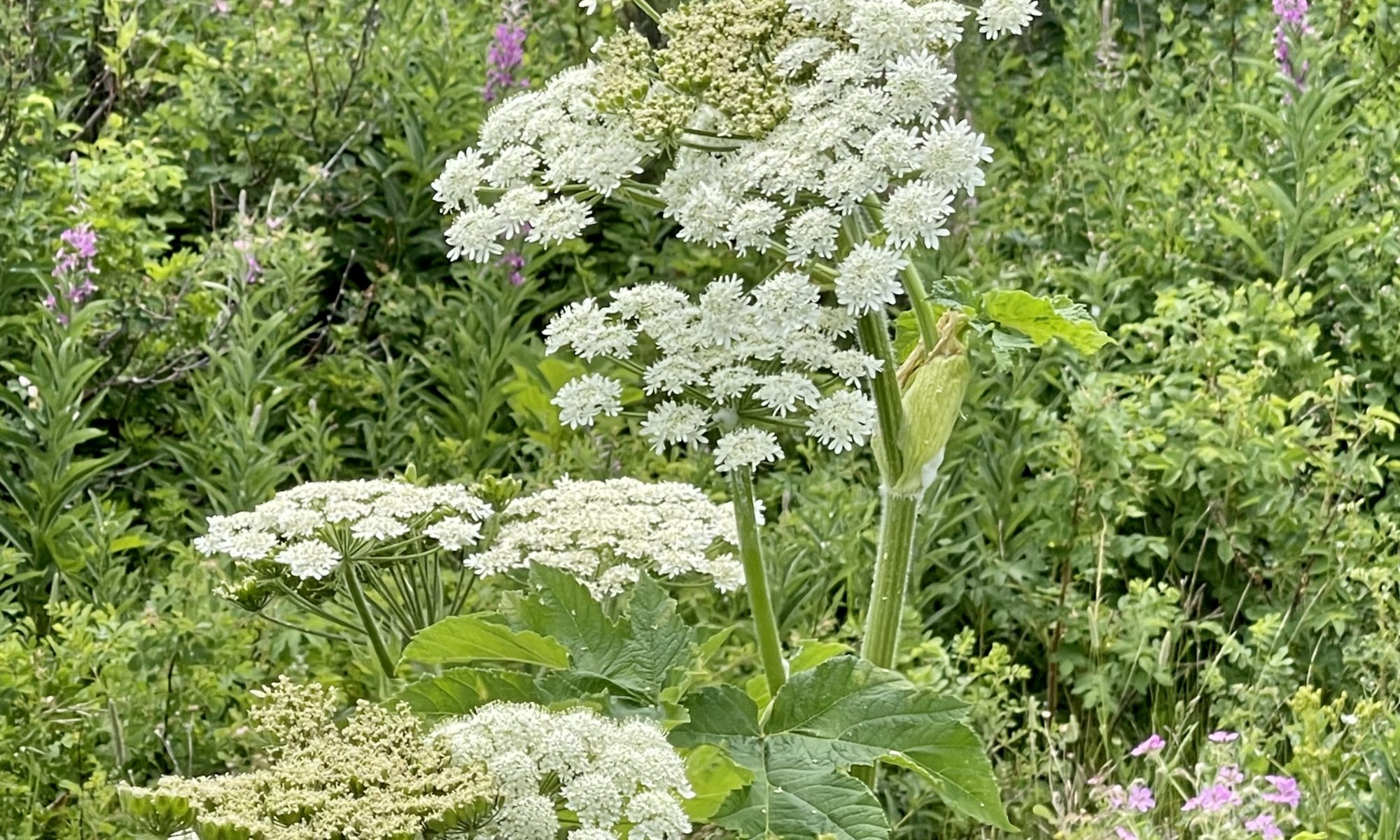
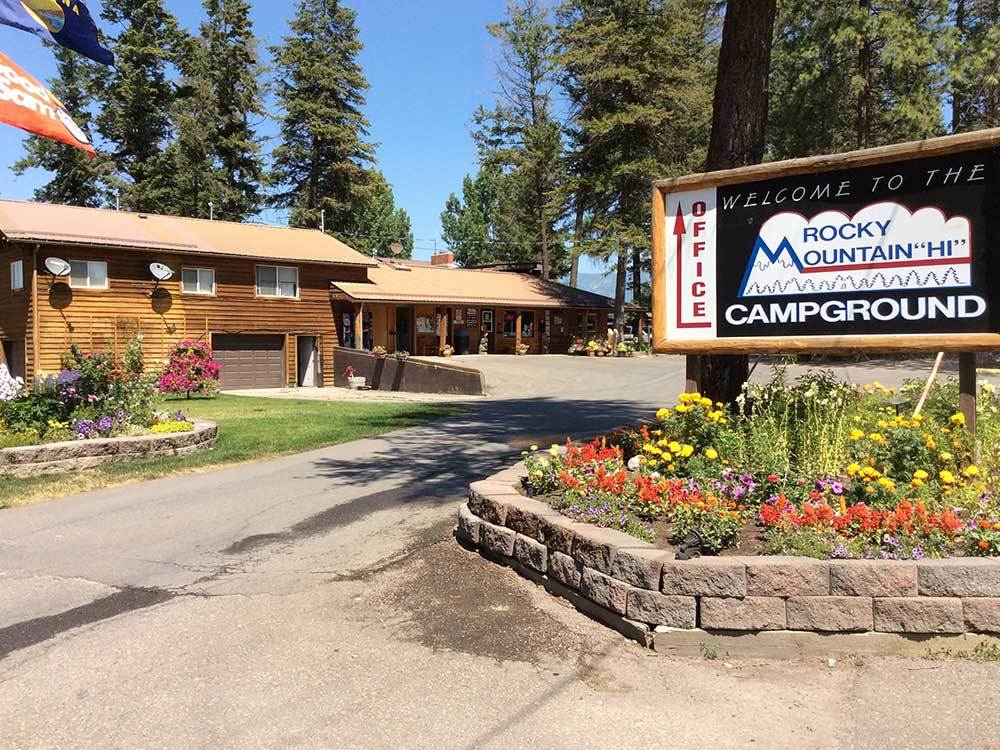
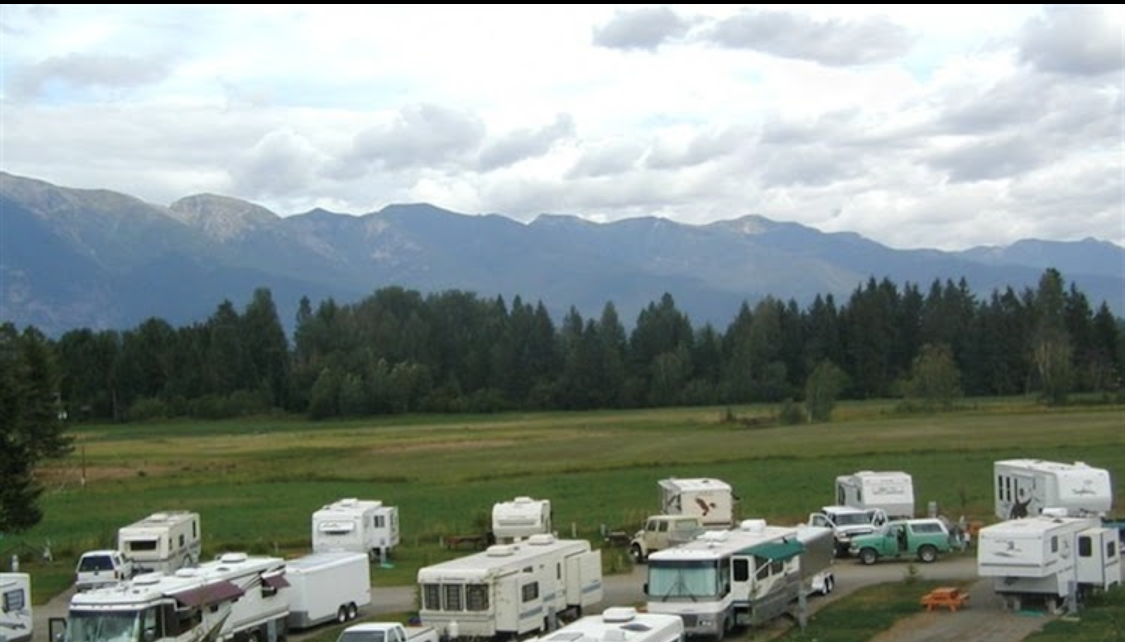

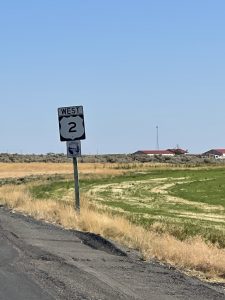
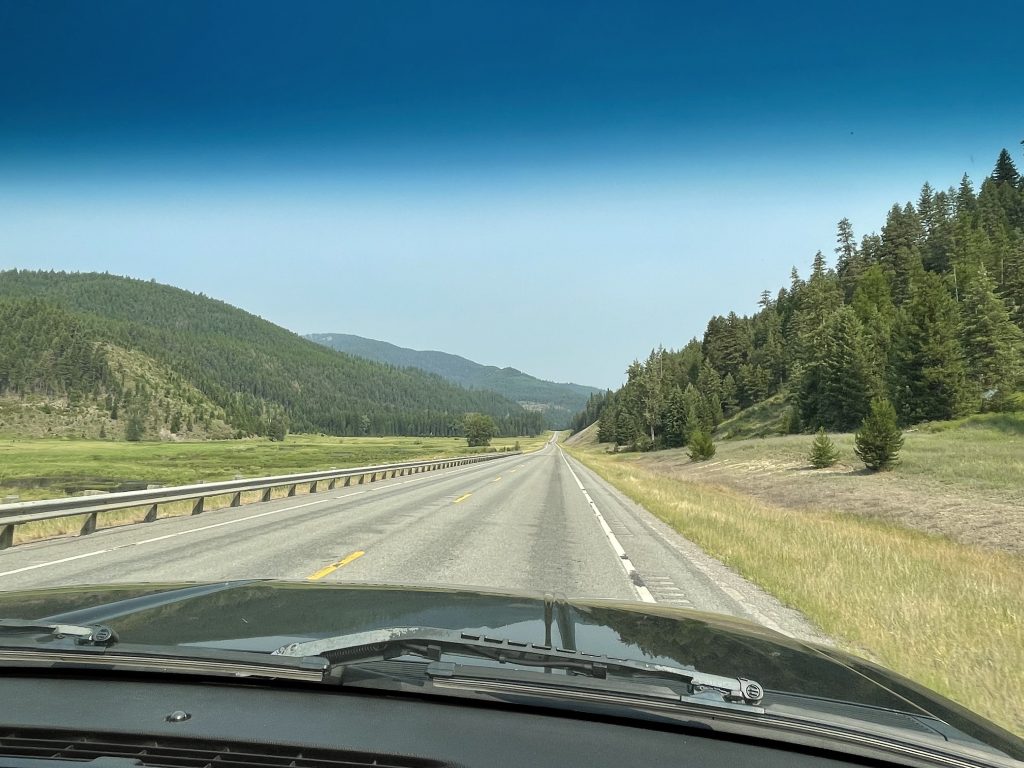
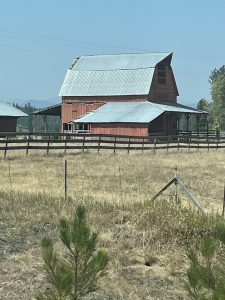
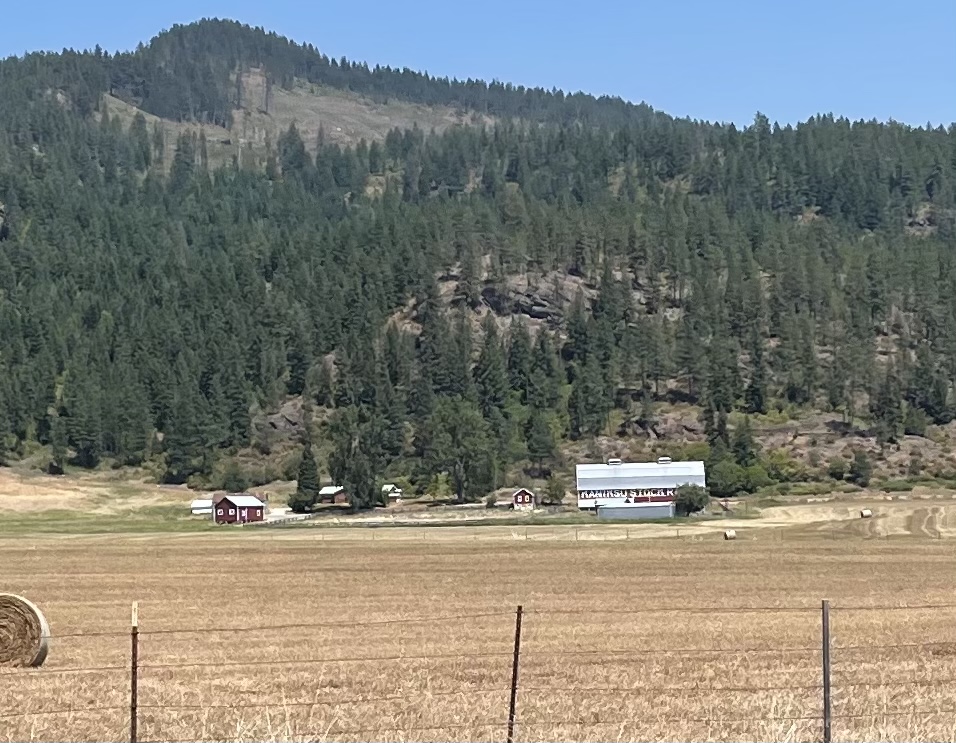
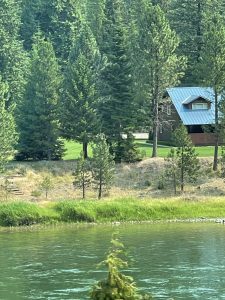
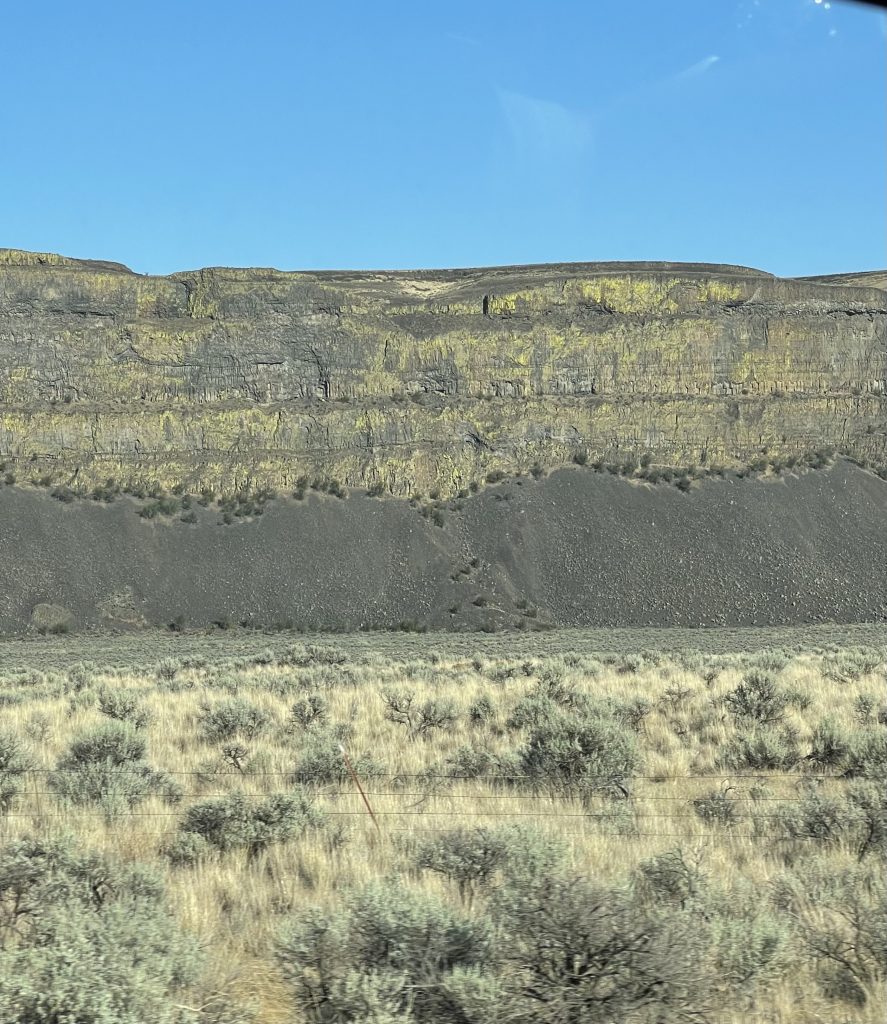
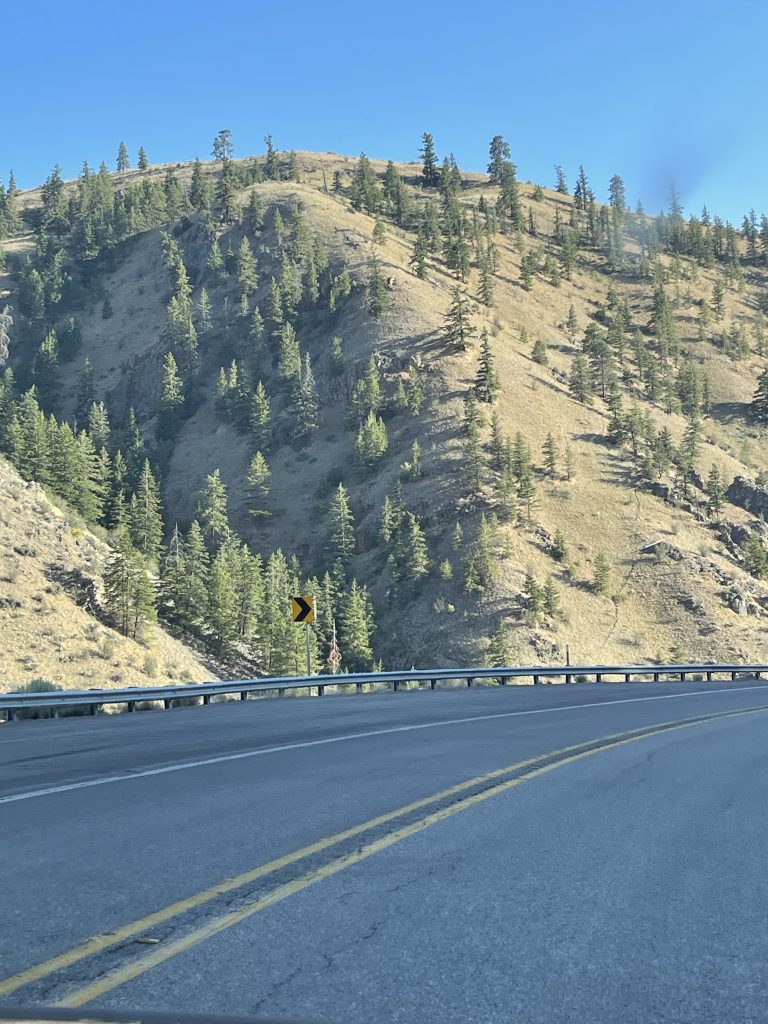
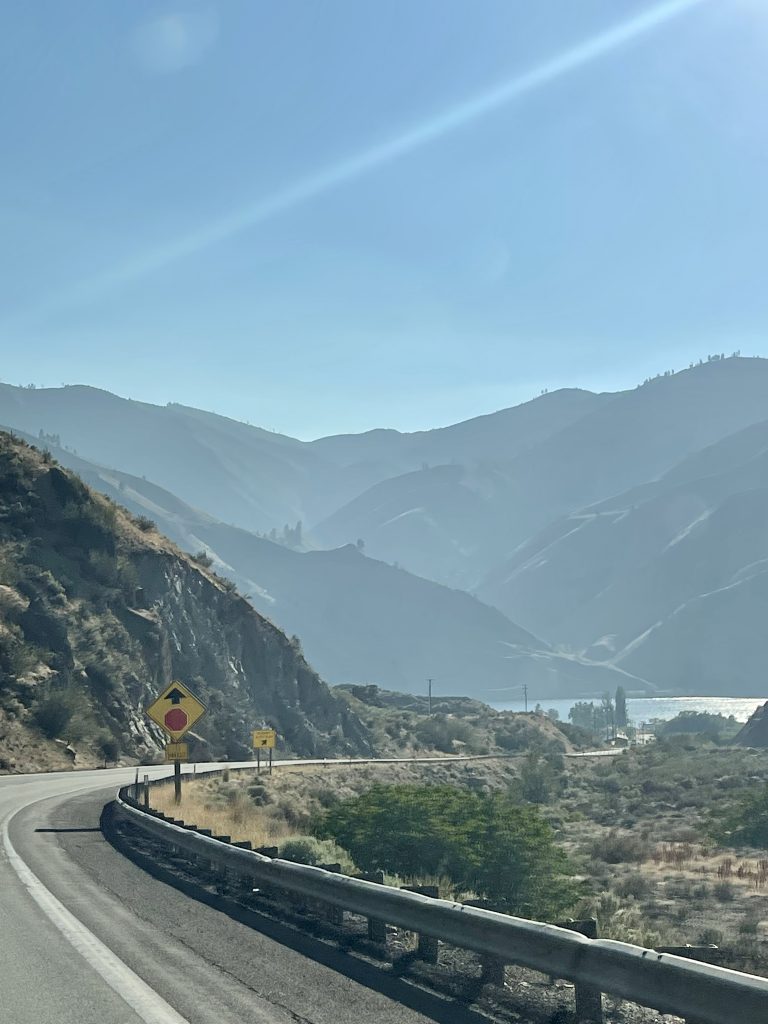
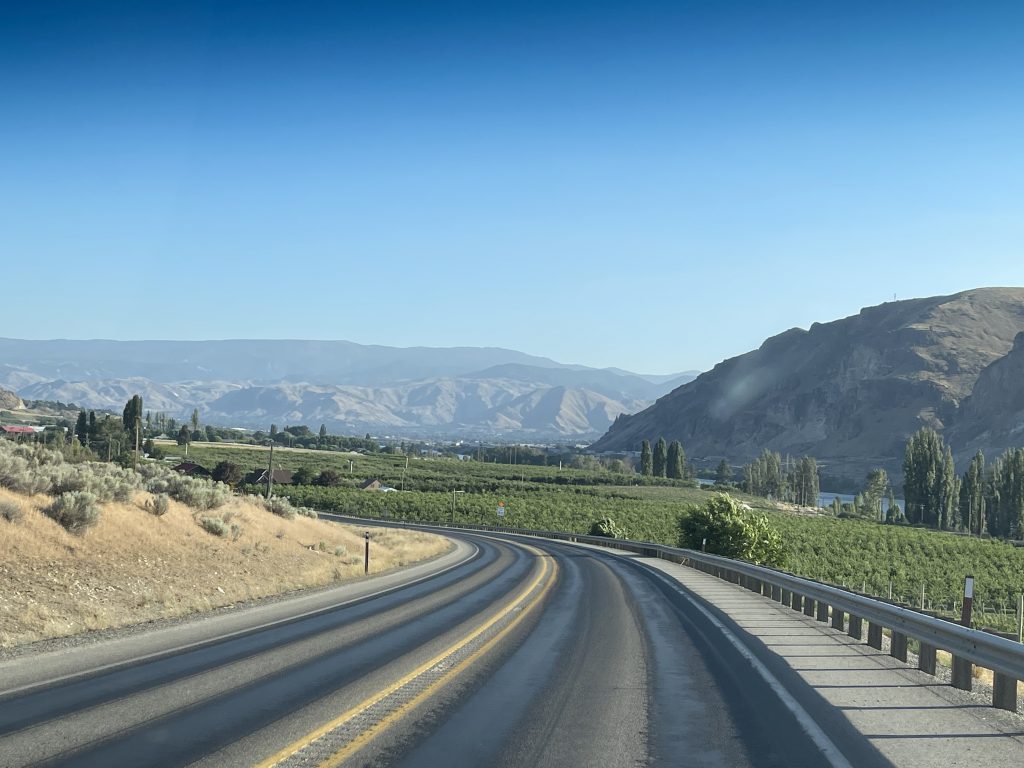
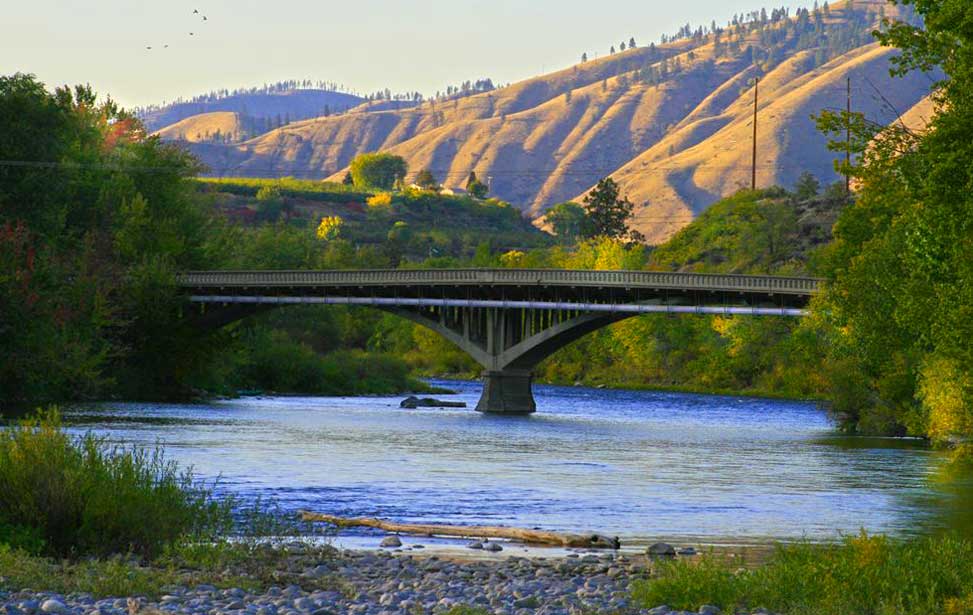
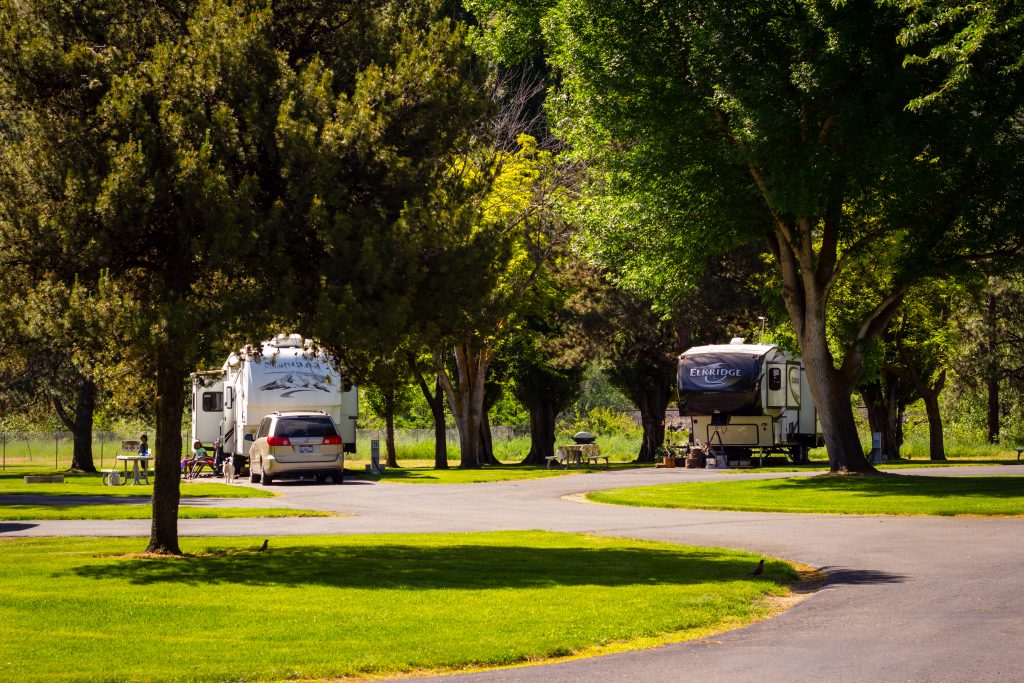


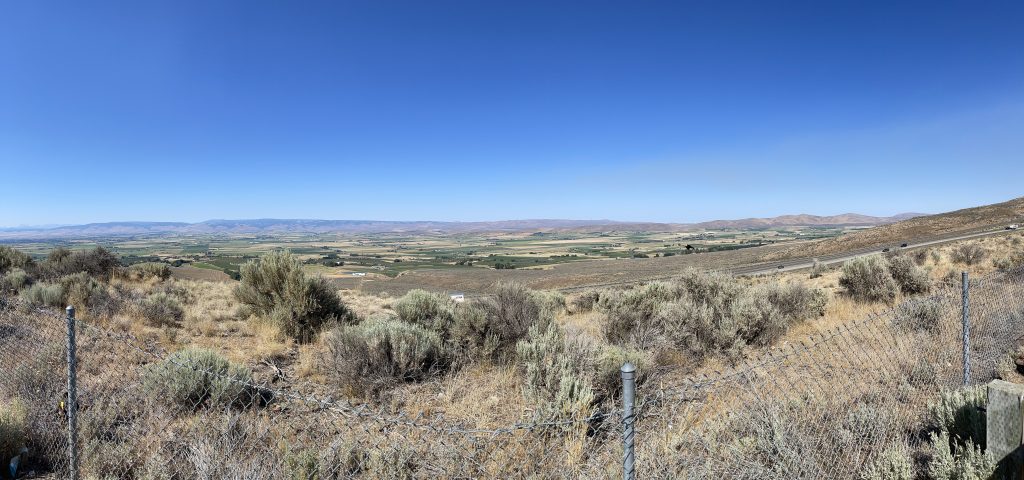
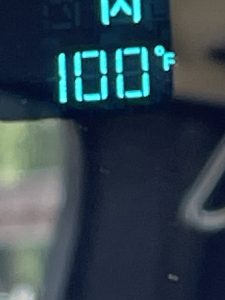
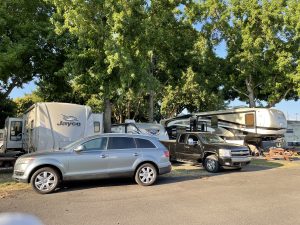
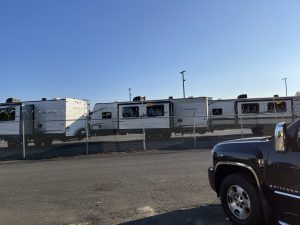
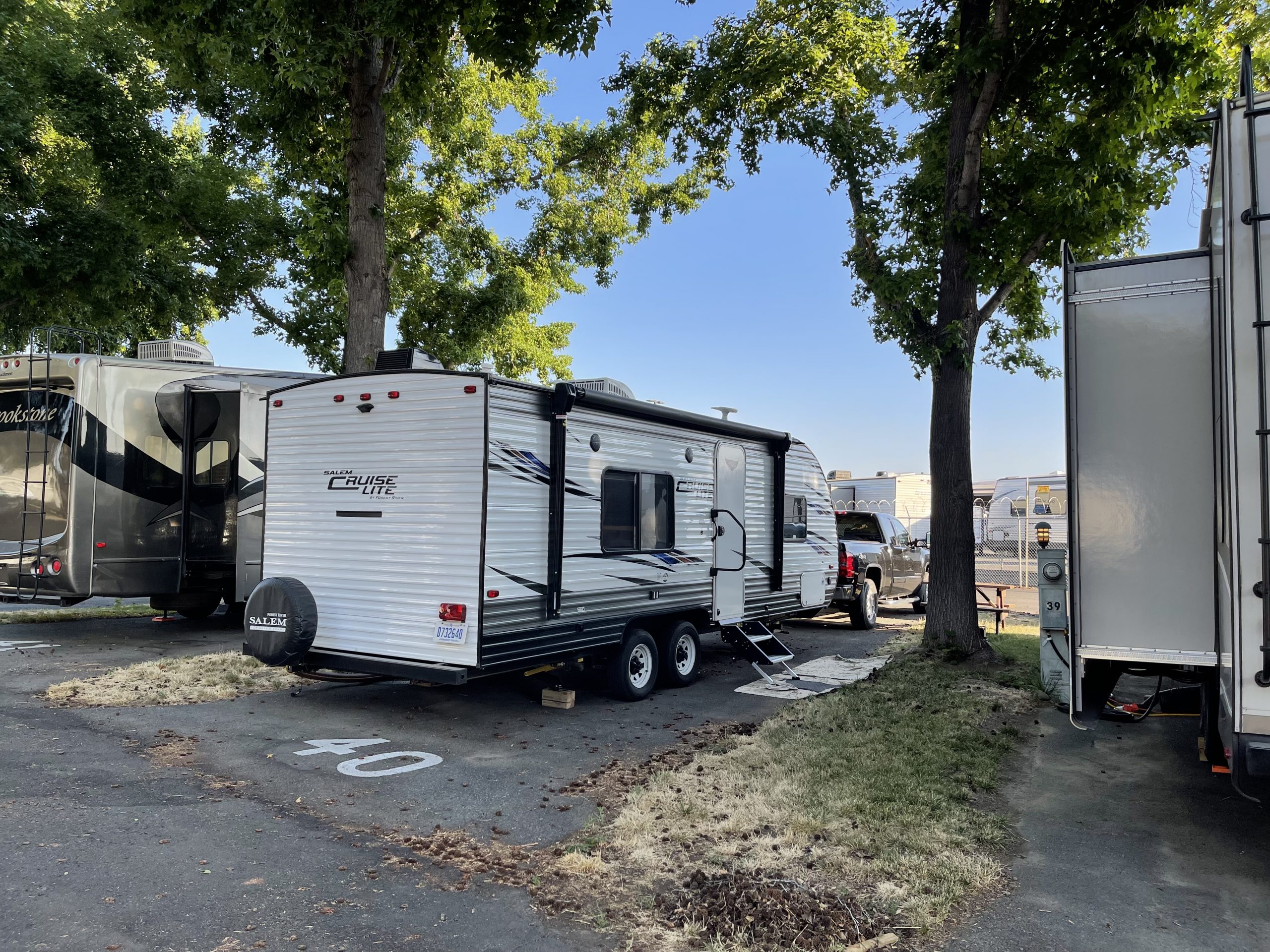
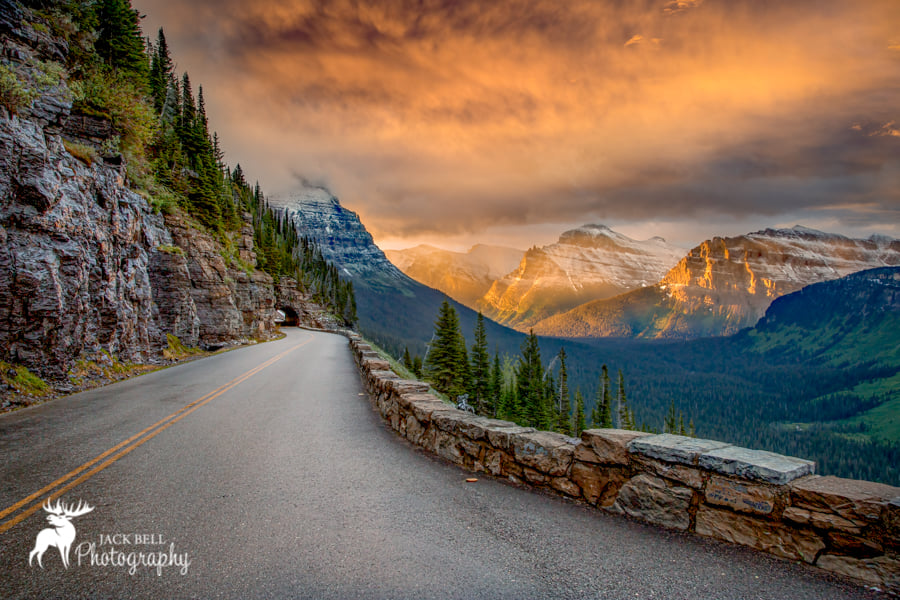
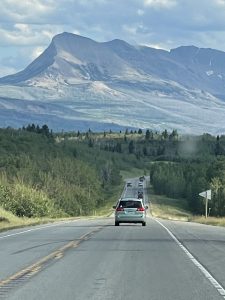
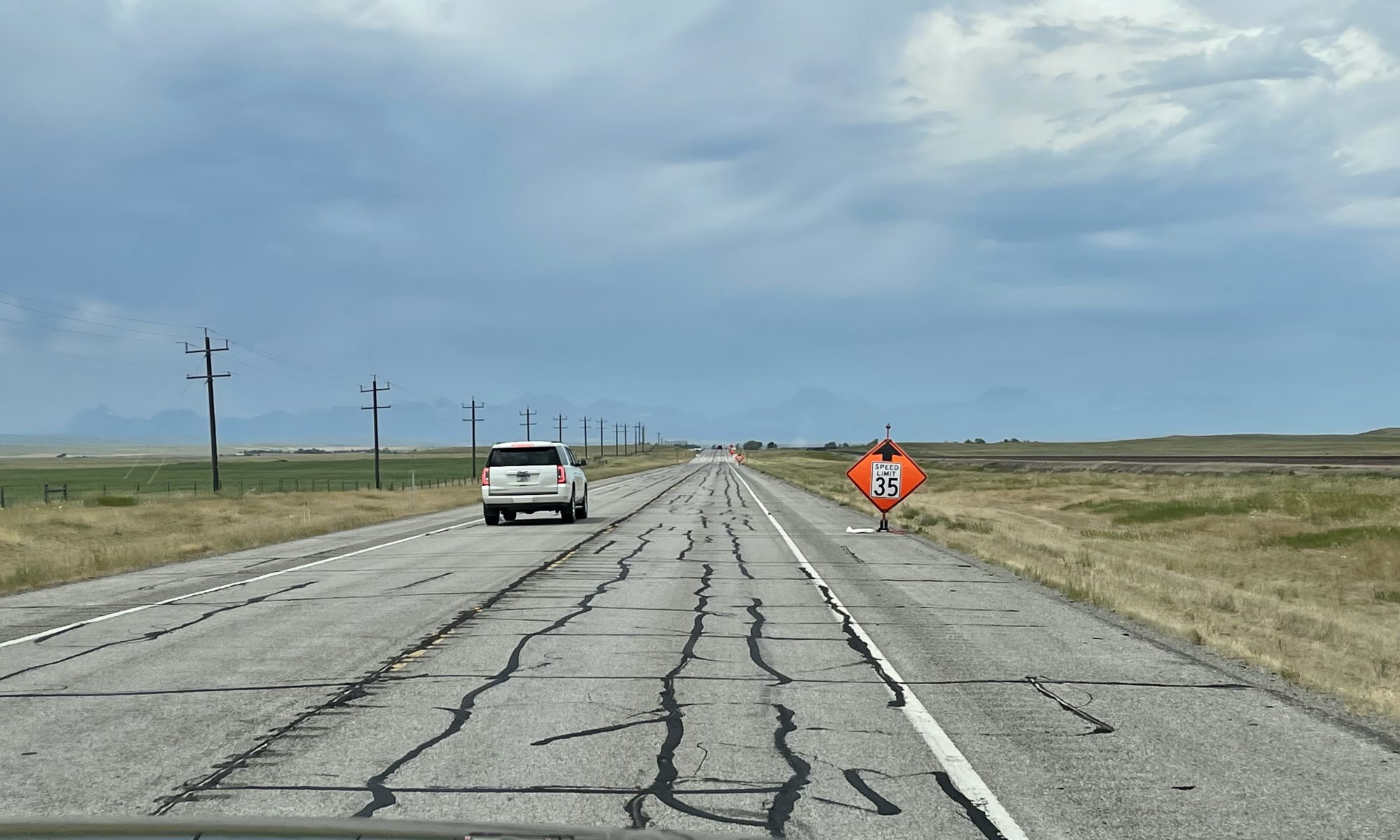
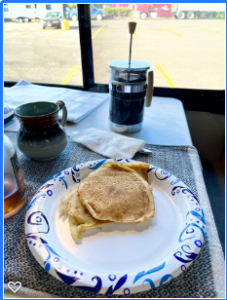
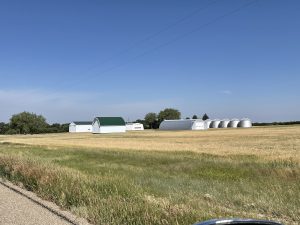
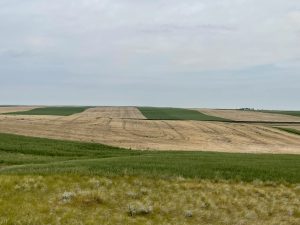
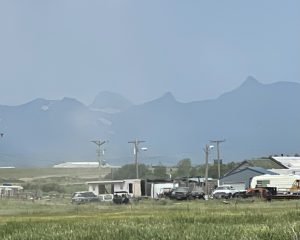
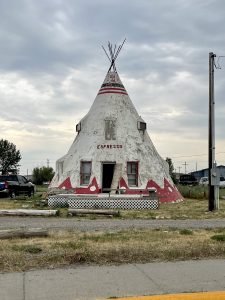
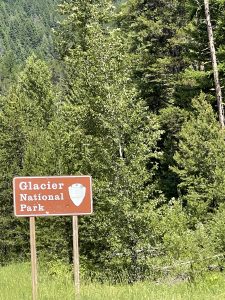
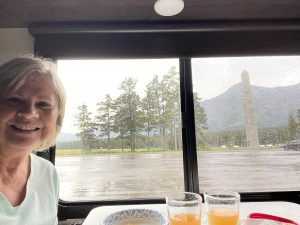
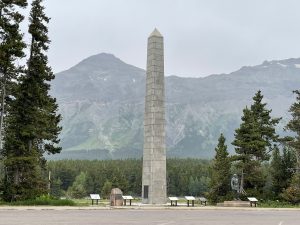
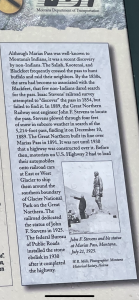
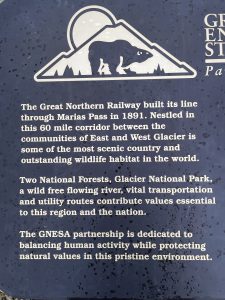
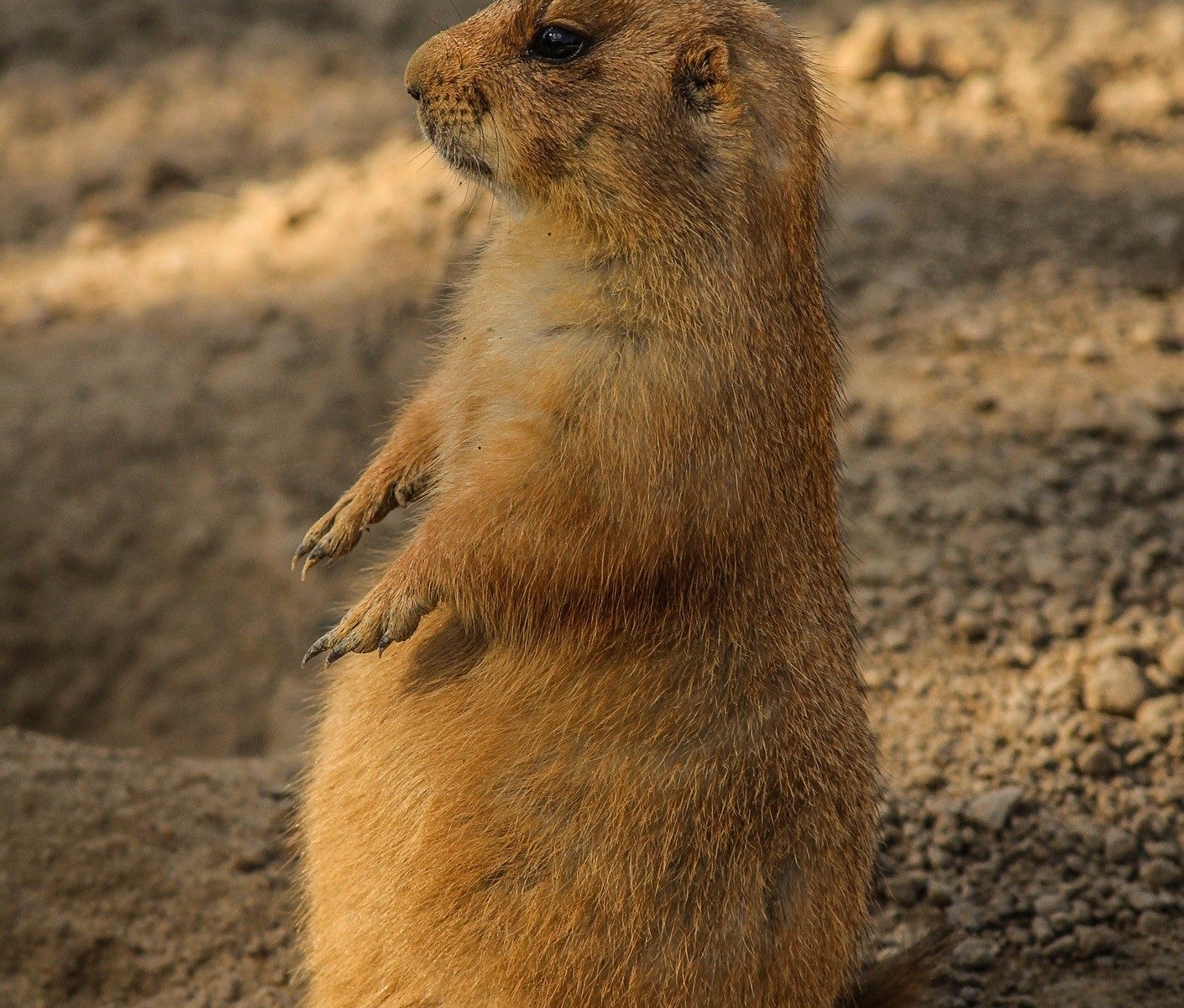
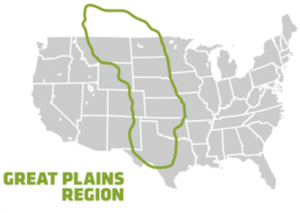
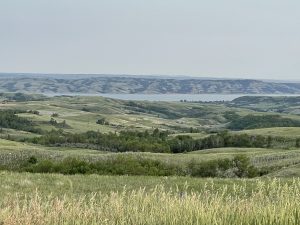
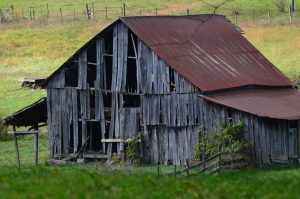
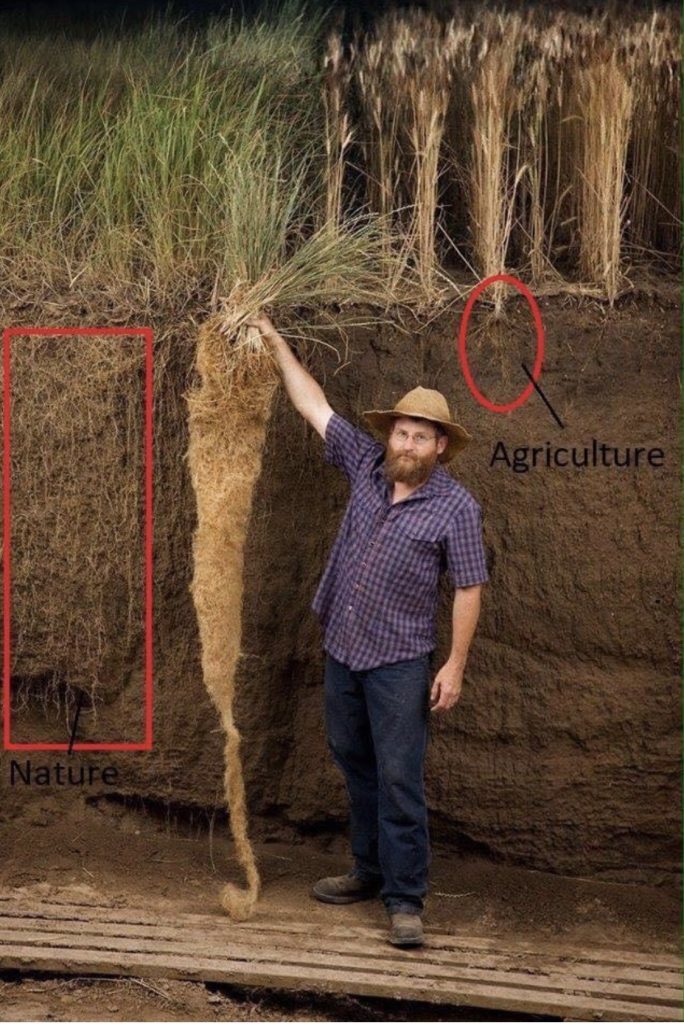
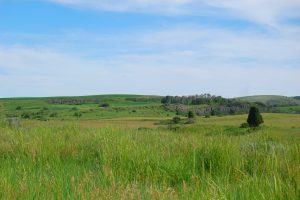
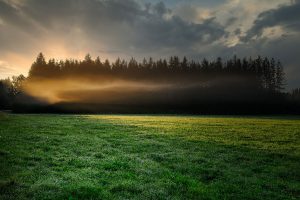
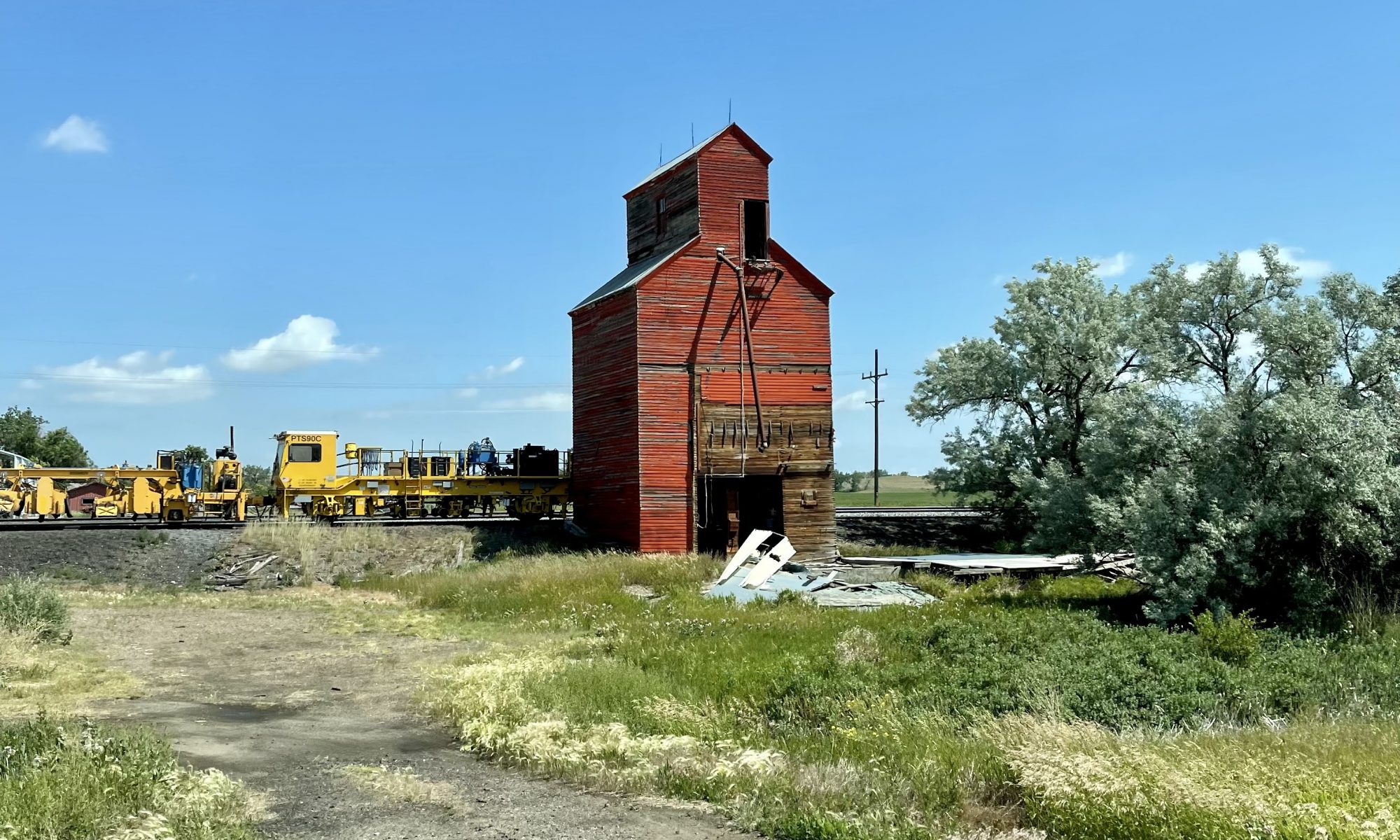
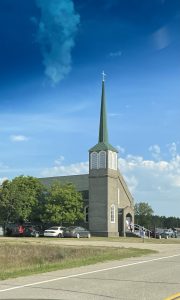


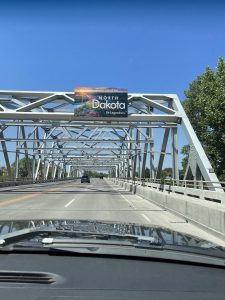
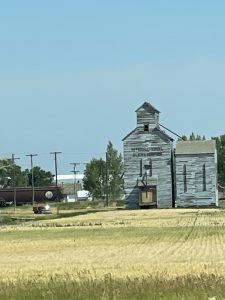
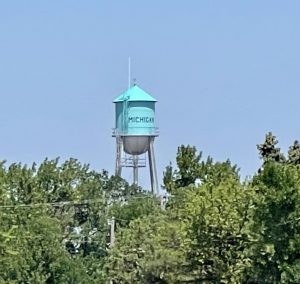

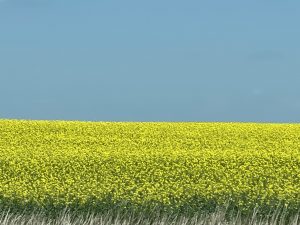
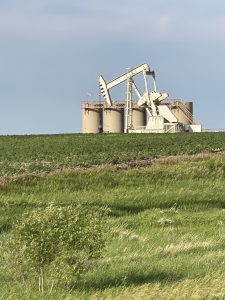
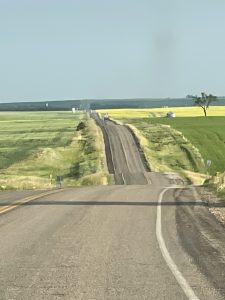
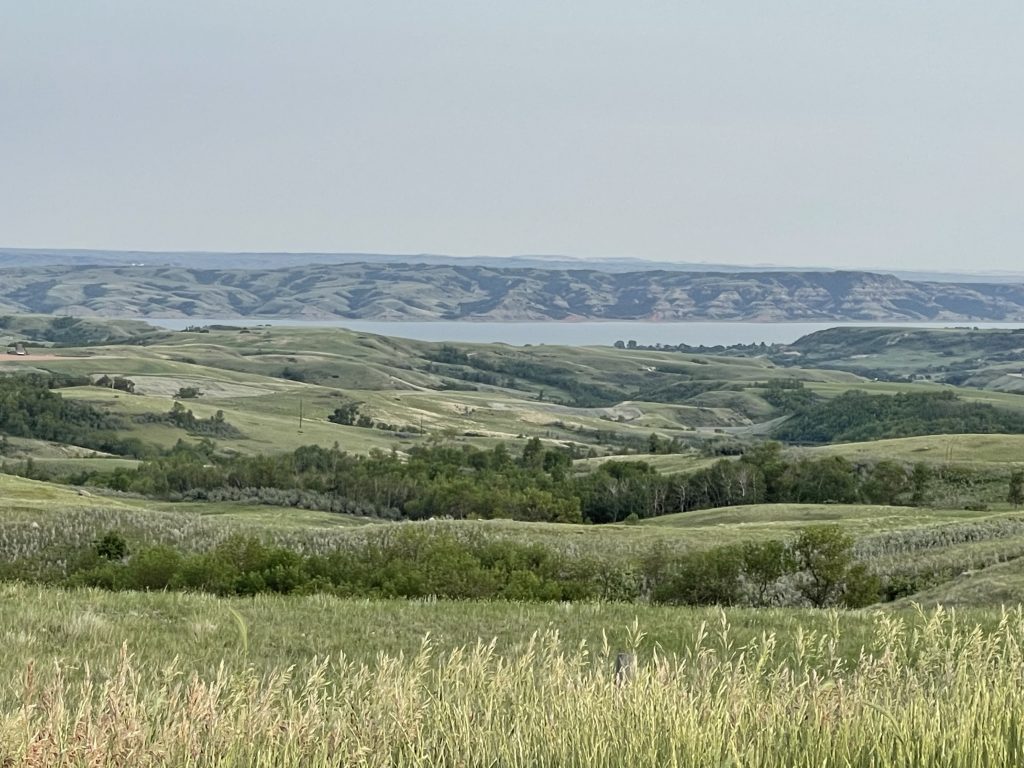
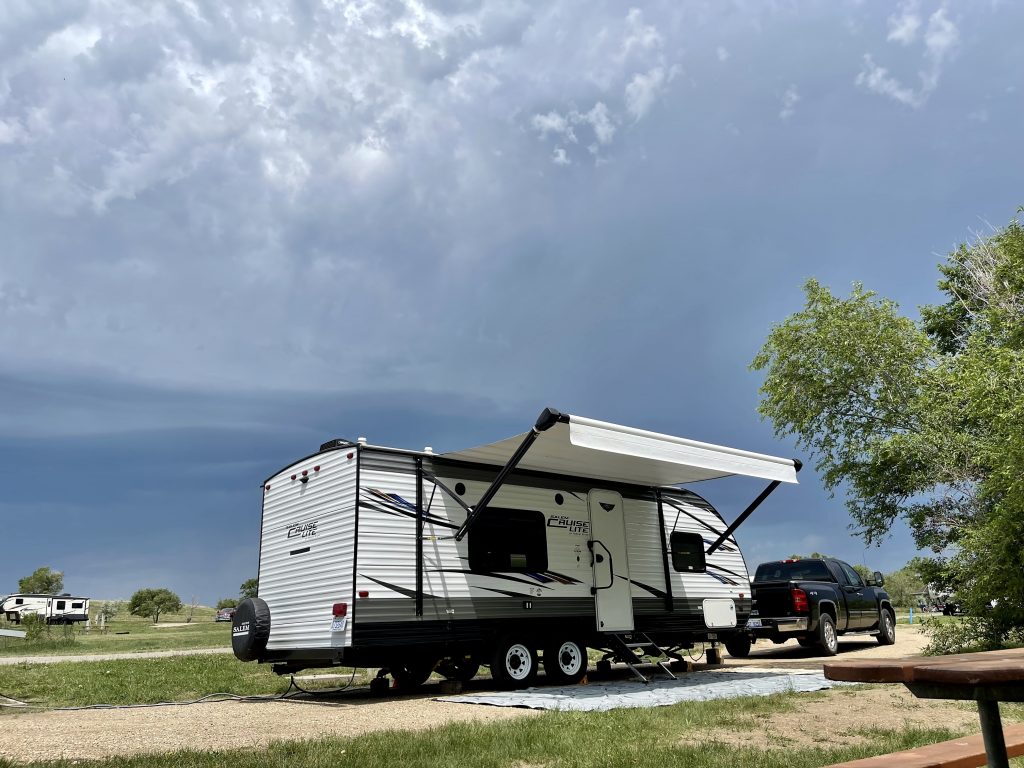
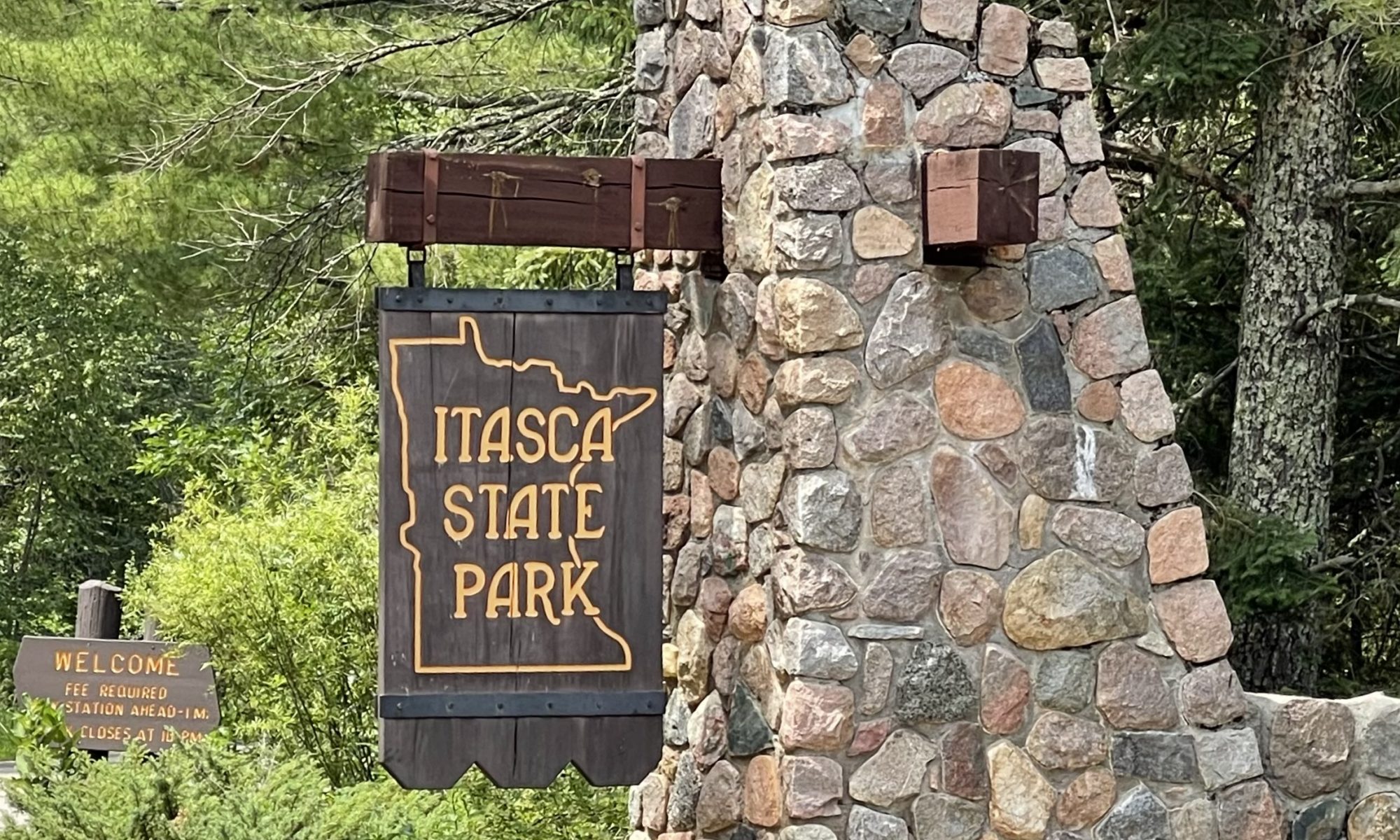
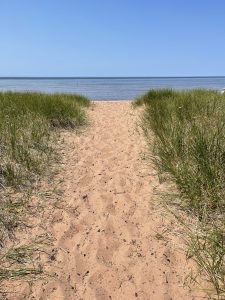
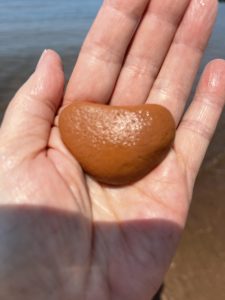
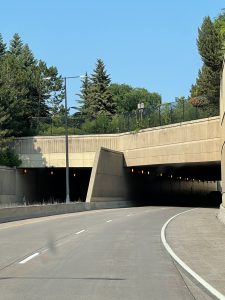
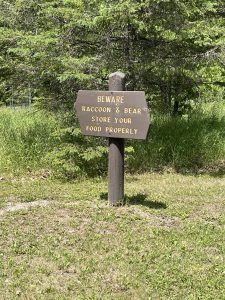
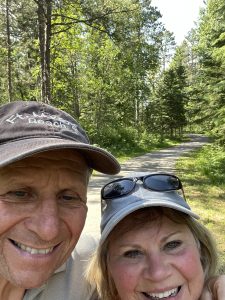 The trail was smooth, thank goodness, as it was long.
The trail was smooth, thank goodness, as it was long.